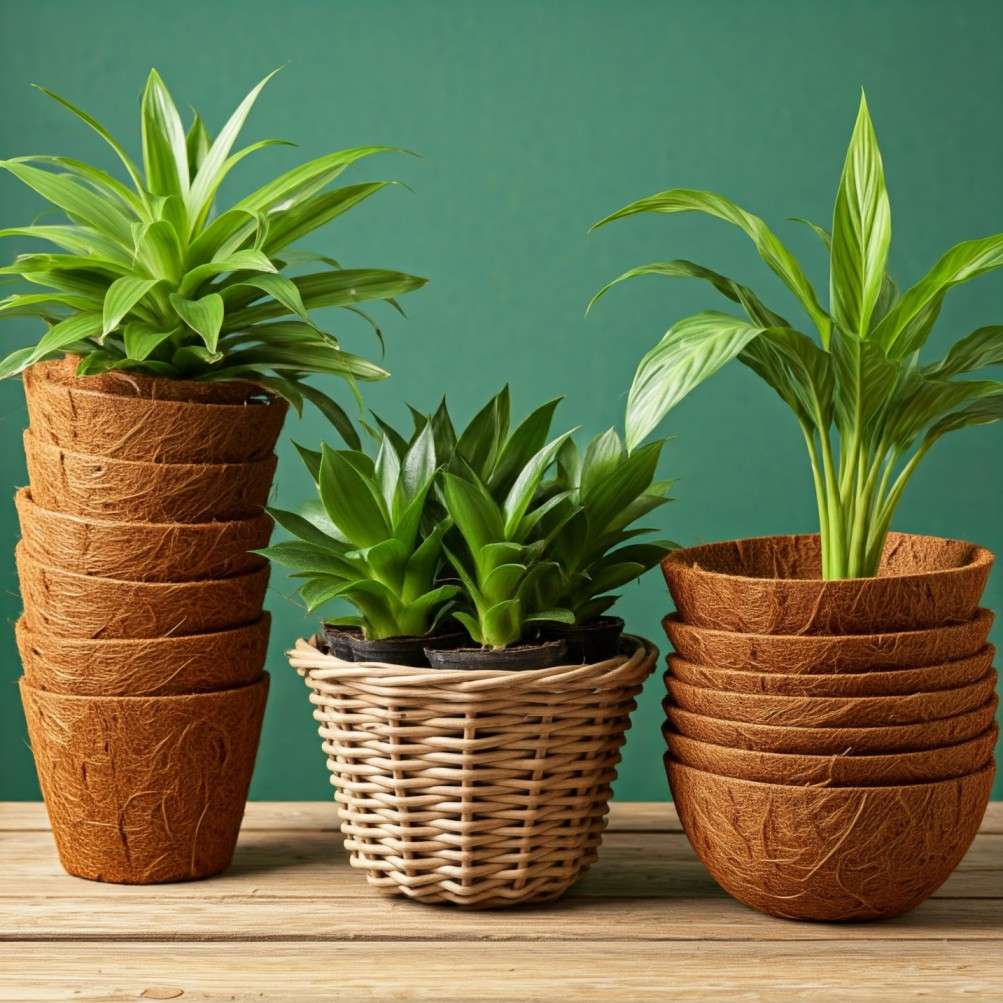Coco Coir Liners: Eco-Friendly Potting with Benefits and Drawbacks
Coco coir, which is extracted from the husk of coconuts, is relatively new to the market and is widely used in gardening and potting. Derived from the fibrous husk of coconuts, these liners offer numerous benefits, including moisture retention and biodegradability. However, they also come with certain challenges, such as the need for careful nutrient management and potential drying out. This article explores the benefits and drawbacks of using coco coir liners for potting, incorporating insights from coir products manufacturers in Sri Lanka.
Understanding Coco Coir Liners
Coco coir liners are made from organic coconut and are mainly used to support soil and plants in wire baskets. These liners are best used for hanging baskets and pots and are preferred by gardeners because they are biodegradable. These coir products Sri Lanka are available in different sizes and forms; they are used for different gardening purposes, including home accessories and wedding events.
Advantages of using Coco Coir Liners
● Moisture Regulation
Another aspect that one is more likely to notice about coco coir is its capacity to hold water. Coir liners can also contain large volumes of water, and through a slow process, the water is made available to the plant roots. Such a property is most advantageous in hot environments where plants may wilt in a short time. Also, coir is highly permeable, thus providing good drainage and aeration and preventing the development of root rots.
● Eco-Friendly
This coco coir is organic, being 100% natural and environmentally friendly as it is biodegradable. Having coir liners is an environmentally friendly strategy because the coir used comes from the processing of coconut husks. Once again, coir can be returned to the earth by composting or left in the ground to improve the fertility of the soil to plants. Coir Products Sri Lanka emphasizes the environmental benefits of their offerings, aligning with sustainable gardening practices.
● Nutritional Value
Coconut coir has been found to consist of other nutrients, such as potassium and phosphor which are important for plant growth. Some coir liners are also antifungal, preventing diseases from affecting the plants and thus improving their health. Since coir has a pH of seven, it is suitable for a variety of plants and hence can be used in a variety of gardening.
● Aesthetic Appeal
Coco coir liners give gardens and patios a natural appearance, which is appealing to any garden lover. Their roughness fits well in a variety of design concepts, motivating gardeners and designers to introduce them to their designs.
Drawbacks of Coco Coir Liners
● Initial Handling Challenges
Some gardeners using coir complain of the rough nature of the coir as it feels a bit rough while handling. The fibers may be somewhat stiff and can be rather knotted, and this may be a problem when first laying and running the fibers. Despite possible doubts about its functionality, coir can enhance the lining perfectly when properly molded and integrated into the planters.
● Potential for Drying Out
Although coir has a high water retention capacity, it can dry up very fast, especially under very hot conditions. This implies that constant check and irrigation are crucial to avoid depriving the plants of moisture stress. To avoid this, some gardeners use moisture control materials, which only creates other challenges when potting the plants.
● Nutrient Management
Thus, coir alone does not provide a total nutrient balance for plants. Gardeners have to add extra nutrients to the plants, especially nitrogen, phosphorus, and potassium, for the plants to grow healthy. This extra measure is necessary and should be planned, but it can be a disadvantage for those looking for easy gardening solutions.
● Variable Quality
Another factor to consider when looking at coir products is that the quality of coir products may differ from manufacturer to manufacturer. It’s crucial to choose reputable coir product manufacturers in Sri Lanka to ensure high-quality liners free from contaminants and salt build-up. This may result in poor quality plants, poor growth, and, in some cases, poor health of the plants in the nursery.
Conclusion
Coco coir liners also come with several advantages for environmentally sensitive growers, including water-holding capacity and biodegradability. But they also have their problems, like extreme fluctuation between nutrient requirements and a tendency to dry out. The trials of renewing old planters show that while there are issues with handling coir, this material can indeed improve plant growth if used properly.
For those considering eco-friendly potting solutions, coco coir may be a worthwhile investment, particularly when sourced from reputable coir products manufacturers in Sri Lanka.





 +94 (0) 31 228 1114
+94 (0) 31 228 1114 
